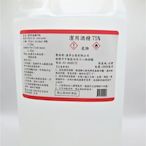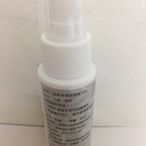搜尋結果
 $399醫強 酒精75% (500mlx6罐)+噴頭x1購物中心
$399醫強 酒精75% (500mlx6罐)+噴頭x1購物中心 $420醫強 酒精75%(4000ml/瓶)購物中心
$420醫強 酒精75%(4000ml/瓶)購物中心 $459生發 清菌酒精75%(4000ml)購物中心
$459生發 清菌酒精75%(4000ml)購物中心 $290潔用酒精75% 4000ml 4公升 1桶【詠晴中西藥局】小茉莉|護康 酒精潔淨液 隨機出貨 食品級酒精 台灣製造詠晴中西藥局
$290潔用酒精75% 4000ml 4公升 1桶【詠晴中西藥局】小茉莉|護康 酒精潔淨液 隨機出貨 食品級酒精 台灣製造詠晴中西藥局![醫強 酒精75% 4000ml/瓶(2入組) 醫強 酒精75% 4000ml/瓶(2入組)]() $690醫強 酒精75% 4000ml/瓶(2入組)購物中心
$690醫強 酒精75% 4000ml/瓶(2入組)購物中心![宸鼎清潔用酒精75% 60ml 2026年 宸鼎清潔用酒精75% 60ml 2026年]() $40宸鼎清潔用酒精75% 60ml 2026年hsh358不議價賣場
$40宸鼎清潔用酒精75% 60ml 2026年hsh358不議價賣場![派頓 潔康酒精75% 500mlx6瓶+消毒酒精居家用噴頭 FD-200 1入 派頓 潔康酒精75% 500mlx6瓶+消毒酒精居家用噴頭 FD-200 1入]() $419派頓 潔康酒精75% 500mlx6瓶+消毒酒精居家用噴頭 FD-200 1入購物中心
$419派頓 潔康酒精75% 500mlx6瓶+消毒酒精居家用噴頭 FD-200 1入購物中心![唐鑫 潔用酒精 75% (500mlx6罐) 唐鑫 潔用酒精 75% (500mlx6罐)]() $418唐鑫 潔用酒精 75% (500mlx6罐)購物中心
$418唐鑫 潔用酒精 75% (500mlx6罐)購物中心![派頓 潔康酒精75% 4000mlX6瓶 派頓 潔康酒精75% 4000mlX6瓶]() $2475派頓 潔康酒精75% 4000mlX6瓶購物中心
$2475派頓 潔康酒精75% 4000mlX6瓶購物中心![宸鼎清潔用酒精75%(4L) 6瓶可免運 宸鼎清潔用酒精75%(4L) 6瓶可免運]() $420宸鼎清潔用酒精75%(4L) 6瓶可免運Y9644758001
$420宸鼎清潔用酒精75%(4L) 6瓶可免運Y9644758001![生發 清菌酒精75%(500mlx6瓶) + 消毒酒精居家用噴頭 FD-200(1入) 生發 清菌酒精75%(500mlx6瓶) + 消毒酒精居家用噴頭 FD-200(1入)]() $399生發 清菌酒精75%(500mlx6瓶) + 消毒酒精居家用噴頭 FD-200(1入)購物中心
$399生發 清菌酒精75%(500mlx6瓶) + 消毒酒精居家用噴頭 FD-200(1入)購物中心![醫強 酒精75%(4000mlx6瓶) 醫強 酒精75%(4000mlx6瓶)]() $1790醫強 酒精75%(4000mlx6瓶)購物中心
$1790醫強 酒精75%(4000mlx6瓶)購物中心
Alcohol is found in fermented beverages such as beer, wine, and distilled spirit [20] – in particular, rectified spirit, [21] and serves various purposes; it is used as a recreational drug, for example by college students, for self-medication, and in warfare.
Pharmacology of ethanol. The pharmacology of ethanol involves both pharmacodynamics (how it affects the body) and pharmacokinetics (how the body processes it). In the body, ethanol primarily affects the central nervous system, acting as a depressant and causing sedation, relaxation, and decreased anxiety. The exact mechanism remains elusive ...
Ethanol (also called ethyl alcohol, grain alcohol, drinking alcohol, or simply alcohol) is an organic compound with the chemical formula CH3CH2OH. It is an alcohol, with its formula also written as C2H5OH, C2H6O or EtOH, where Et stands for ethyl.
A standard drink or (in the UK) unit of alcohol is a measure of alcohol consumption representing a fixed amount of pure alcohol. The notion is used in relation to recommendations about alcohol consumption and its relative risks to health. It helps to educate alcohol users. [1] .
Alcohols, in various forms, are used medically as an antiseptic, disinfectant, and antidote. [1] Alcohols applied to the skin are used to disinfect skin before a needle stick and before surgery. [2] They may also be used as a hand sanitizer; [2] to clean other areas; [2] and in mouthwashes. [3] [4] [5] Taken by mouth or injected into a vein ...
Alcohol (also known as ethanol) has a number of effects on health. Short-term effects of alcohol consumption include intoxication and dehydration. Long-term effects of alcohol include changes in the metabolism of the liver and brain, several types of cancer and alcohol use disorder. [1] Alcohol intoxication affects the brain, causing slurred ...
The alcohol by volume shown on a bottle of absinthe Alcohol by volume (abbreviated as alc/vol or ABV) is a standard measure of how much alcohol is contained in a given volume of an alcoholic beverage (expressed as a volume percent). [1] [2] [3] It is defined as the number of millilitres (mL) of pure ethanol present in 100 mL (3.5 imp fl oz; 3.4 US fl oz) of solution at 20 C (68 F).








